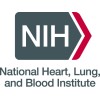
IMPAACT P1107: Effects of Cord Blood Transplantation With CCR5Δ32 Donor Cells on HIV Persistence...
HIV InfectionIMPAACT P1107 will describe the outcomes of HIV-infected persons, ages 12 months and older, who undergo transplantation with CCR5Δ32 cord blood stem cells for treatment of cancer, hematopoietic disease, or other underlying disease.

Severe Impairment of Solute-Free Water Clearance in Patients With HIV Infection
HIV InfectionThe objective of the present study is to analyze the overall tubular function, and in particular that from the proximal tubule and the thick ascending loop of Henle (TALH) in patients with HIV infection receiving or not tenofovir-containing antiretroviral treatment in comparison with seronegative controls, by applying a validated tubular physiological test known as "Low sodium infusion test". Hypothesis is that patients with HIV infection and normal renal function will show subclinical tubular abnormalities compared with seronegative controls

A Prospective, Observational, Drug Utilization Study of Subjects Taking Truvada for Pre-exposure...
Pre-exposure Prophylaxis for Prevention of HIV InfectionThis is a prospective, 3-year observational study to describe drug utilization in uninfected individuals (UIs) who initiate emtricitabine (FTC)/tenofovir disoproxil fumarate (TDF) (Truvada®) for a pre-exposure prophylaxis (PrEP) indication. An electronic source of pharmacy/medical encounter information will be used to assess the demographics and other characteristics of the subjects prescribed FTC/TDF or its components in a prospective fashion. The data provider will supply all the de-identified information regarding each visit/interaction that the subject has had with the health system and all the diagnoses and medications that the UI has had prospectively and retrospectively for the length of time captured by the source selected. 200 physicians who prescribe FTC/TDF for a PrEP indication will be sampled from the same source.

Nutritional Status Among naïve HIV Infected Patients and HIV Infected Patients Receiving Highly...
HIV InfectionsA prospective cross-sectional study evaluates nutritional status and its relationship to the related factors in Thai HIV-infected patients who attending in out patient clinic.

Diagnosis and Treatment of Co-infection With Human Immunodeficiency Virus /Latent Tuberculosis Infection...
Human Immunodeficiency Virus (HIV)Tuberculosis (TB)1 moreThe purpose of this study is to determine of once identified to the subjects infected with human immunodeficiency virus (positive VIH), to diagnose latent Tuberculosis, and to treat her with isoniazid for six months, measuring the production of Interferon range pre and posttreatment, to evaluate this way the result of the treatment on the immune response

Observational Study of HIV-associated Neurocognitive Disorder
HIV Associated Neurocognitive DisorderHuman Immunodeficiency VirusIt is estimated that over 1 million people in the United States have HIV infection. While HIV is treatable, there are still high rates of HIV-associated neurocognitive disorder (HAND). HAND is defined by low scores on memory testing. To meet the criteria for HAND, an HIV-infected individual has to have a low score on at least two different memory tests. It is estimated that 20-50% of people living with HIV have HAND. It is therefore still a common problem. While individuals with HAND typically improve on antiretroviral therapy for HIV, often this improvement is incomplete. Also, there are over 20 antiretroviral medications approved for HIV in the US. It is not clear if the specific choice of antiretroviral medication makes a difference in the improvement of HAND. The investigators have designed a small preliminary study in which subjects with and without HAND who have never been on treatment for HIV or have been off treatment for at least 6 months are followed for the first 12 months after starting antiretroviral therapy.The investigators will enroll a maximum of 46 subjects (23 subjects in each arm). Subjects will also be followed by their primary HIV medical provider. For the study, subjects will be followed for 48 weeks. There are three followup visits: 12 weeks, 24 weeks, and 48 weeks. Memory testing will be performed at baseline and each followup visit. Blood will also be taken at baseline and the three followup visits to measure changes in inflammation. A lumbar puncture will be performed at baseline and at 24 weeks to measure changes in inflammation and amount of HIV virus in the spinal fluid. There is also an optional lumbar puncture at the last study visit of 48 weeks

Improving Antiretroviral Medication Adherence Among HIV-infected Youth: Phase I
HIV InfectionHIV is increasing among adolescents and young adults in the US. Antiretroviral medications, when taken correctly (≥90% of prescribed doses taken), can vastly improve life expectancy. However, adherence among HIV-infected young people is suboptimal, and few interventions are available to help adolescents adhere to treatment. The first phase of the study is an intervention development phase, which includes conducting interviews with 40 HIV-infected youth for input on the adaptation of the approach. The information obtained from the qualitative interviews is used to adapt the Life-Steps intervention (designed by our group for HIV-infected adults) to be responsive to the needs of HIV-infected adolescents, with acceptability of topics and content, and feasibility of intervention delivery to be tested in an open pilot trial.

Cardiac Autonomic Control in Children of HIV Positive Mothers
Acquired Immunodeficiency SyndromeArrhythmia2 moreTo establish the incidence, clinical spectrum, and natural history of cardiac dysautonomia as defined by heart rate spectral analysis in both HIV infected and noninfected children and to evaluate the value of heart rate spectral analysis for predicting dysrhythmias and sudden death in infants and children born to HIV infected mothers.

A Comparison of Adherence Rates to Ritonavir and Its Accompanying Protease Inhibitor
HIV InfectionsPharmacologic boosting of protease inhibitors with ritonavir has become standard practice in antiretroviral therapy. Patients are instructed to take ritonavir at the same time as its accompanying protease inhibitor. However, ritonavir is unpopular with many patients because of its large size and because of the recommended need for refrigeration. This study will test the hypothesis that adherence to ritonavir is inferior to adherence to its accompanying protease inhibitor in patients receiving such therapy.

Prospective Epidemiological Study Of The Prevalence Of HLA-B*5701 In HIV-1 Infected Patients
InfectionHuman Immunodeficiency Virus I2 moreThis study is a cross-sectional observational study to evaluate the prevalence of HLA-B*5701 in the European area and in major European ethnotypes. Any HIV-1 infected patient will be eligible for this study including treatment naïve and experienced patients, as well as patients previously tested for HLA-B*5701. Patients will be approached during a standard clinic visit, and will be consented prior to any study specific procedure. They will be asked to provide a tissue sample (cheek cells and blood sample) which will be used to assess HLA-B*5701 status by local and central laboratories. In selected sites patients may be asked to provide an additional blood sample. This sample will be used to develop and validate different methodologies for assessing HLA-B*5701 status.
